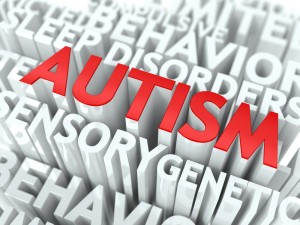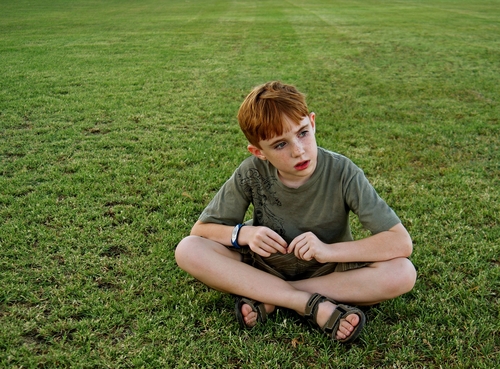Can Neurofeedback Help ASD ?
Autism Spectrum Disorder (ASD) is the name for what were previously known as four seperate disorders including autistic disorder (autism) and Asperger’s disorder. ASD is a complex condition with a complex diagnosis process involving a lot of interpretation and judgement. ASD often co-exists with other diagnoses (called comorbidity by doctors). There is a striking overlap between AD/HD and ASD symptoms, which causes confusion among families, as well as professionals. When a child is distracted and moves a lot at school or has difficulties to keep focused during a conversation, people often think of AD/HD. However, these symptoms might be confused with ASD symptoms. The first case study applying Neurofeedback to autism was in 1994, 20 years after it was first seen to reduce hyperactivity and led to the significant body of evidence for Neurofeedback for ADHD. Since then the evidence has grown, as described in this free report on Neurofeedback for ASD.
Although the evidence for ASD is still building compared with ADHD, we anticipate that before too long, Neurofeeedback will be embraced as the treatment of choice for ASD.
In this randomised controlled study from 2010, parents of the NF group reported significant improvements in reciprocal social interactions and communication skills. EEG analysis showed 60% of NF group reduced Theta waves in anterior cingulate cortex (ACC) known to be involved in social & executive dysfunctions in autism:
- Kouijzer, M. E., van Schie, H. T., de Moor, J. M., Gerrits, B. J., & Buitelaar, J. K. (2010). Neurofeedback treatment in autism. Preliminary findings in behavioral, cognitive, and neurophysiological functioning. Research in Autism Spectrum Disorders, 4(3), 386-399.
In this 2007 study the Neurofeedback group had an 89% success rate improving ASD symptoms, 40% reduction in core ASD symptomology (ATEC scores) and 76% reduction in hyper-connectivity:
- Coben, R., & Padolsky, I. (2007). Assessment-guided neurofeedback for autistic spectrum disorder. Journal of Neurotherapy, 11(1), 5-23.
A further 2009 study showed that the effects lasted beyond 12 months:
- Kouijzer, M. E., de Moor, J. M., Gerrits, B. J., Buitelaar, J. K., & van Schie, H. T. (2009). Long-term effects of neurofeedback treatment in autism. Research in Autism Spectrum Disorders, 3(2), 496-501.
Symptoms of ASD
 The important difference between AD/HD symptoms and ASD symptoms is best described as the ‘inability to relate to people and situations from early life’. Children suffering ADHD symptoms can have peer conflicts because they are too impulsive or they are inattentive. Children suffering ASD symptoms however, struggle to develop peer relationships, because they experience difficulties understanding and expressing non-verbal communication, such as facial expressions. The main symptoms related to ASD, as described in DSM-5 (the 2013 version of the reference book for ‘mental disorders’), are deficits in social communication and interaction and restricted, repetitive patterns of behaviour, interests or activities:
The important difference between AD/HD symptoms and ASD symptoms is best described as the ‘inability to relate to people and situations from early life’. Children suffering ADHD symptoms can have peer conflicts because they are too impulsive or they are inattentive. Children suffering ASD symptoms however, struggle to develop peer relationships, because they experience difficulties understanding and expressing non-verbal communication, such as facial expressions. The main symptoms related to ASD, as described in DSM-5 (the 2013 version of the reference book for ‘mental disorders’), are deficits in social communication and interaction and restricted, repetitive patterns of behaviour, interests or activities:
Persistent deficits in social communication & interaction
- Deficits in social-emotional reciprocity
- Deficits in nonverbal communicative behaviours used for social interaction
- Deficits in developing, maintaining and understanding relationships
Examples of these deficits are:
| Deficits in social-emotional reciprocity | Deficits in nonverbal communicative behaviours | Deficits in developing, maintaining and understanding relationships |
|---|---|---|
| Abnormal social approach | Poorly integrated verbal and nonverbal communication | Difficulties adjusting behaviour to suit social contexts |
| Failure of normal back-and-forth conversation | Abnormalities in eye contact (e.g. repeatedly looking away) and body language | Difficulties in sharing imaginary play |
| Reduced sharing of interests, emotions or affect | Deficits in understanding and use of gestures | Difficulties in making friends |
| Failure to initiate or respond to social interactions | Total lack of facial expression and non-verbal communication | Absence of interest in peers |
Restricted, repetitive patterns of behaviour, interests or activities
ASD diagnosis in DSM-5 requires two of the following behaviours:
- Stereotyped or repetitive motor movements, use of objects or speech
- Insistence on sameness, inflexible adherence to routines, or ritualized patterns of verbal or nonverbal behaviour
- Highly restricted, fixated interests that are abnormal in intensity or focus
- Hyper or hypo-reactivity to sensory input or unusual interest in sensory aspects of the environment
| Stereotyped or repetitive motor movements, use of objects or speech | Insistence on sameness, inflexible adherence to routines, or ritualized patterns of verbal or nonverbal behaviour | Highly restricted, fixated interests that are abnormal in intensity or focus | Hyper or hypo-reactivity to sensory input or unusual interest in sensory aspects of the environment |
|---|---|---|---|
| Simple motor stereotypes | Extreme distress after small changes | Strong attachment to or preoccupation with unusual objects | Apparent indifference to pain/temperature |
| Lining up toys or flipping objects | Difficulties with transitions | Excessively circumscribed | Adverse response to specific sounds or textures |
| Echolalia (echoing a noise someone else has made) | Rigid thinking patterns, greeting patterns | Perseverative interests (extreme focus on single subject) | Excessive smelling or touching of objects |
| Idiosyncratic phrases | Need to take same route or eat same food every day | Visual fascination with lights or movements |
Treatment for ASD
Treatment options are limited and the latest NHS NICE Clinical Guidelines focus on behavioral therapy and medication when behavior is particularly challenging.
There is a lot of interest in Applied Behaviour Analysis (ABA) for ASD, a behavioural training approach that aims to modify behaviour using ‘Operant Conditioning’ techniques whereby behaviour can be learned through rewarding the desired behaviour and punishing undesired behaviour.
There is no doubt that ABA can work to change behaviour, and animal trainers use exactly the same techniques. But these approaches only work to the extent of the behavioural scenarios specifically taught.
There are also concerns that ABA can cause long-term harm, creating behaviours that match PTSD criteria following exposure to trauma. Researchers have concluded that ABA can create “lasting fear-related associative memories”. This 2018 study found a 130% increase in the likelihood of a child exposed to ABA meeting the criteria for Post Traumatic Stress Disorder (PTSD): Kupferstein, H. (2018). Evidence of increased PTSD symptoms in autistics exposed to applied behavior analysis. Advances in Autism, 4(1), 19-29.
Neurofeedback works at a deeper level than ABA, without the risks. It works naturally, based on the concept of learning through feedback.
Some of the questions that you could ask when considering an approach to ASD are:
- Do I want to train behaviour to respond more ‘appropriately’ (ABA) or train the underlying brain mechanisms to function better (Neurofeedback) ?
- Do I want to teach routinised behaviour (ABA) or unlock the potential for a new level of interaction with the world (Neurofeedback) ?
The graphics below compare Neurofeedback with ABA and other interventions:
Neurofeedback and ASD
ASD is a neurodevelopmental disorder for which Neurofeedback has shown to be very effective. With Neurofeedback the ASD symptoms are explained as a kind of brain deregulation in certain brain areas. By focusing on the specific areas of the deregulation.
Neurofeedback can change core deficits of ASD by enhancing physical and emotional calming and improving the ability to manage sensory input. For example, by training the right back side of the brain hyperactive behaviour can be reduced and sensory integration (‘better understanding of the world and more social awareness’) and body awareness can be enhanced. By training the right front side rages, emotional outburst and overall emotional expression – not words and grammar, but appropriate emotional communication – can be improved. 
There are children that have shown an increase of common sense and a desire to communicate. Other children are supported in their ‘starting up’ language.
By training the left front side of the brain changes can be made in attention and obsessive compulsive symptoms, however, it is the right side training that has shown to be the most effective for ASD symptoms.
At BrainTrainUK we work with symptoms, we don’t need a diagnosis. We offer a tool that has been demonstrated to help ASD symptoms with countless clients. There is no guarantee it will work, but our success rates are high.
The approach we use was developed by Seigfried and Susan Othmer, who committed their lives to developing Neurofeedback as a therapy when it transformed the life of their son Brian, who suffered from Asperger’s Syndrome and a range of comorbid conditions.
LIKE TO KNOW MORE?
0207 118 0887
If you are interested to see if your child’s ASD challenges will respond to Neurofeedback as the research and our clinical experience has shown they can, please call us today.


